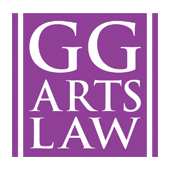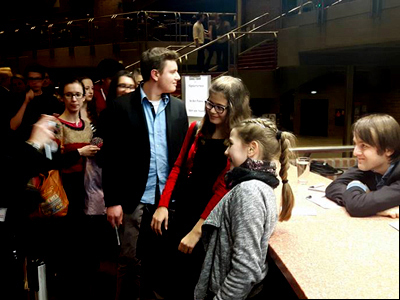By Brian Taylor Goldstein, Esq.
I realize there are other equally important issues out there than visas and international touring. However, in the wake of the recent terrorist attack in California, and as U.S. politicians and political candidates roll out a “Keep the Hate Alive” campaign, we are constantly receiving alarming updates from clients as well as from the American Immigration Lawyers Association of artists encountering new obstacles and challenges. Here are the latest changes and challenges you need to be aware of:
1. A Visa Cannot Be Valid Beyond The Dates In The Approved Visa Petition
When a visa petition is approved by USCIS, it is approved for a specific classification period. When an artist then goes to a U.S. Consulate to apply for her or her visa, the visa issued is supposed to reflect the classification period of the approved petition. For example, if a violinist is approved for an O-1 classification period of August 1, 2015 to July 31, 2016, then the O-1 visa stamped into her passport should reflect an expiration date of July 31, 2016. If you examine an O or P visa, you will most often see the letters “PED” followed by a date. “PED” refers to the “Petition Expiration Date.” The PED date “should” coincide with the expiration date of the visa itself.
Unfortunately, some U.S. Consulates have erroneously been issuing O-1 visas that expire beyond the classification period of the approved petition—in some cases, O-1 visas have been issued for with a validity period of up to five years in the future! If this happens, your artist has not won the immigration jackpot! Under U.S. law, the maximum validity period of an O-1 visa for an artist cannot exceed three years. Moreover, it cannot exceed the classification period of the approved petition.
Recently, a prominent artist was turned away because she attempted to enter the U.S. under just such circumstances. A visa petition had been filed for her in 2014 and the petition was approved for an O-1 classification period of 8 months. However, the U.S. Consulate issued her an O-1 visa that did not expire until 2019. She and her management reasonably presumed that this meant she was free to use her O-1 visa until 2019 and no further visa petitions were required. Indeed, until recently, she had been entering the U.S. on the visa ever since 2014 without any trouble. Her past entries were the result of luck and inadvertence on the part of U.S. Immigration Officers at the port of entry. This will no longer be the case. All U.S. Immigration Officers will be scrutinizing all visas far more closely.
When USCIS approves a visa petition, it issues an I-797 Approval Notice with the specific dates of the approved visa classification period. If you or your artist ever receives a visa from a U.S. Consulate that expires beyond the dates of the classification period or beyond the PED date on the visa, ignore all dates beyond the PED date! Assume the visa expires on the PED date and do not use it for any work or travel beyond that date.
(For those of you who are actually interested in legal minutiae, there ARE, in fact, legitimate categories of 5 year O and P visas—they just don’t apply to artist categories. This is why the consulates can get easily confused.)
2. All Artists Should Travel With A Copy of Their I-797 Petition Approval Notice
Another artist was recently detained at a U.S. airport for attempting to enter the U.S. on an erroneous “5-year O-1 visa.” Ultimately, he was permitted to enter only because he happened to have a copy of his I-797 O-1 Petition Approval Notice indicating that his upcoming U.S. engagement was within the approved classification period. However, he was reminded not to travel on his O-1 visa after the expiration date of the classification period.
Earlier this week, an artist was actually refused entry on his P visa because a U.S. Immigration Officer claimed that he needed to have a copy of his I-797 approval notice. The U.S. Immigration Officer was wrong. The artist had to fly home and be booked on a return flight to the U.S. the next day. Aggravatingly, but not surprisingly, when the artist flew back to the U.S. the next day with a copy of his approval notice, the U.S. Immigration Officer on that occasion didn’t even ask for a copy of the approval notice and the artist was admitted without any questions.
Also this week, a Canadian artist arrived in the U.S. with a copy of her I-797 approval notice (which is all that is required for Canadians) and was refused entry because the U.S. Immigration Officer claimed that she needed to have the original I-797 approval notice. The U.S. Immigration Officer was wrong on this occasion as well. Fortunately, a supervising officer was able to step in and resolve the matter so that the artist was ultimately able to enter.
Except for Canadians, artists and others are not required to travel with a copy of their I-797 petition approval notices—much less the original I-797 approval notice itself. Nonetheless, given that U.S. Immigration Officers have been placed on high alert (without always knowing exactly what they are looking for), we are recommending that all artists travel with a copy of their I-797 approval notice. Should any artist be asked for an “original” approval notice, he or she should calmly and politely ask to speak with a supervising immigration officer. More often than not, the supervising officers are better trained than the officers assigned to the inspection desks.
3. Changes To The ESTA/Visa Waiver Program
Congress is in the process of adding additional restrictions to the Visa Waiver Program—the program which permits citizens of 38 countries to travel to the United States for business or tourism for stays of up to 90 days without a visa. This is often erroneously referred to as an “ESTA visa.” The term “ESTA” stands for “Electronic System For Travel Authorization” and is merely the registration process through which an individual indicates their intent to enter the U.S. without a visa. It is not a visa. This is important because artists are required to have a visa whenever they enter the U.S. to perform—even if they perform for free; even if no tickets are sold; even if they are performing for a non-profit; even if they are performing for a festival; or even if they are performing for a college or university. In short, performers can never enter the U.S. to “perform” under the Visa Waiver Program.
While most of the propose changes to the Visa Waiver Program should not have any impact on artists (unless the artist is from or has ever travelled to certain counties in the past 5 years), United States Customs and Border Patrol has already begun significantly seeking out artists who may be registering for ESTA and attempting to enter the U.S. on the visa waiver program with the intention of performing. We are getting almost daily reports of artists being stopped, refused entry, and having their ESTA/Visa Waiver privileges revoked for life!
I cannot emphasize this enough: any artist who attempts to enter the U.S. under the Visa Waiver Program for any purposes that involves actually performing does so at his or her own peril!
The only limited exceptions—and they are very narrowly construed—are competitions, auditions (including non-public showcases at arts conferences) and speaking (but not performing) at a college or university.
4. There Continue To Be Significant Delays In Processing Visa Petitions
USCIS is presently taking a minimum of 8 – 10 weeks to process visa petitions at both the Vermont and California Service Centers and there appears to be no end in sight to these delays. This means that, as of today, if you need to have an artist enter the U.S. any earlier than March 2016, you need to pay the additional $1225 for premium processing. (The official visa processing times that USCIS posts on its website have always been purely propaganda and should always be disregarded as such.)
On the bright side, dealing with international touring at the moment makes all those other topics we write about–cancellations, copyright infringement, taxes, commission disputes–a little less daunting.
__________________________________________________________________
For additional information and resources on this and other legal, project management, and business issues for the performing arts, visit ggartslaw.com
legal, project management, and business issues for the performing arts, visit ggartslaw.com
To ask your own question, write to lawanddisorder@musicalamerica.com
All questions on any topic related to legal, management, and business issues will be welcome. However, please post only general questions or hypotheticals. GG Arts Law reserves the right to alter, edit or, amend questions to focus on specific issues or to avoid names, circumstances, or any information that could be used to identify or embarrass a specific individual or organization. All questions will be posted anonymously and/or posthumously.
__________________________________________________________________
THE OFFICIAL DISCLAIMER:
THIS IS NOT LEGAL ADVICE!
The purpose of this blog is to provide general advice and guidance, not legal advice. Please consult with an attorney familiar with your specific circumstances, facts, challenges, medications, psychiatric disorders, past-lives, karmic debt, and anything else that may impact your situation before drawing any conclusions, deciding upon a course of action, sending a nasty email, filing a lawsuit, or doing anything rash!


